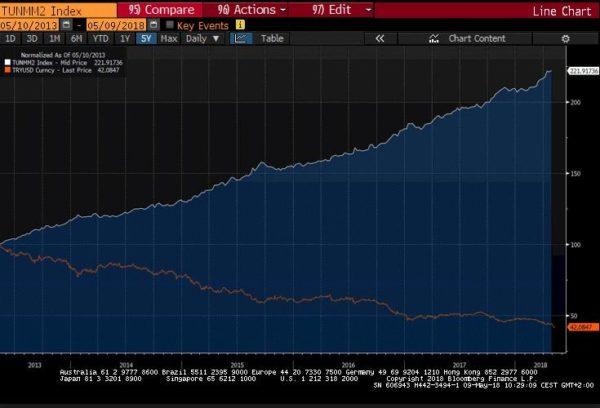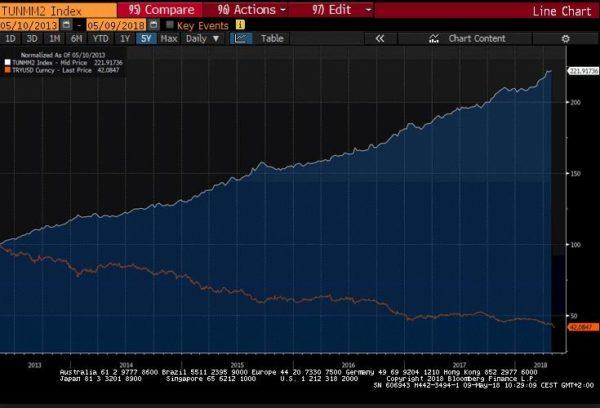The Turkish Lira collapse should have surprised no one. Yet, in this bubble-justifying market, it did.
First and foremost, the lira decline has been ongoing for some time, and has nothing to do with the strength of the US dollar in 2018. The collapse of Turkey was an accident waiting to happen and is fully self-inflicted.
It is yet more evidence of the trainwreck that monetarists cause in economies. Those that say that “a country with monetary sovereignty can issue all the currency it wants without risk of default ” are wrong yet again. Like in Argentina, Brazil, Iran, Venezuela, monetary sovereignty means nothing without strong fundamentals to back the currency.
Turkey took all the actions that MMT lovers applaud. The Erdogan government seized control of the central bank, and decided to print and keep extremely low rates to “boost the economy” without any measure or control.

Turkey’s Money Supply tripled in seven years, and rates were brought down massively to 4.5%.
However, the lira depreciation was something that was not just accepted by the government but encouraged.Handouts in fresh-printed liras were given to pensioners in order to increase votes for the current government, subsidies in rapidly devaluing lira soared by more than 20% (agriculture, fuel, tourism industry) as the government tried to compensate the loss of tourism revenues due to security concerns with subsidies and grants.
Loss of foreign currency reserves ensued, but the government soldiered on promoting excessive debt and borrowing. Fiscal deficits soared, and the rapidly devaluing lira led to a rising amount of loans in US dollars.
This is the typical flaw of monetarists, they believe monetary sovereignty shields the country from external shocks and loans in foreign currencies soar because no one wants to lend in a constantly-debased currency at affordable rates. Then the central bank raises rates but the monetary hole keeps rising as the money supply continues to grow to pay for handouts in local currency.












Leave A Comment